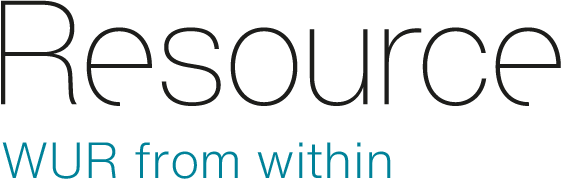Text Sarai Bisseling
Why chemical companies are fighting to redefine PFAS, and how WUR researcher Gabriel Sigmund is calling their bluff. ‘I would say, if something doesn’t break down and wasn’t there in the first place, it should not be there. Period.’
As the EU moves to finalize its groundbreaking PFAS ban, industry lobbyists are scrambling to muddy the waters. Their goal? Change what ‘PFAS’ means on paper. Because if it’s not a PFAS, it’s not regulated. Gabriel Sigmund, an assistant professor of Environmental Technology, explained his views on the legislation of persistent pollutants in an interview with WUR Master’s students. Sigmund recently published a bold scientific statement as part of a growing resistance against one of the most pervasive pollution crises of our time.
Sowing doubt
The playbook is familiar. Deny the problem. Distract regulators. Distort scientific consensus. We’ve seen it before with tobacco, oil and pharmaceuticals. Now the same tactics are being used to weaken PFAS regulations. The EU is about to finalize its PFAS ban on over 10,000 man-made compounds. PFAS are found in a wide range of products, from pharmaceuticals like anaesthetic drugs and antidepressants to firefighting foam and pesticides. In January 2025, journalists in the Forever Lobbying Project exposed intense lobbying efforts to create exceptions in the upcoming laws. The Forever Lobbying Project is a collaboration between 16 newsrooms across Europe and a follow-up to the Forever Pollution Project, which in 2023 revealed the extent of PFAS pollution across the continent.
PFAS
Per- and polyfluoroalkyl substances, better known as PFAS, are man-made chemical compounds that include incredibly strong carbon-fluorine bonds. This means that they don’t break down and stay in the environment forever. According to the OECD (Organization for Economic Cooperation and Development) definition, PFAS are fluorinated substances that contain at least one fully fluorinated methyl group (-CF₃) or methylene group (-CF₂-).
Definition war
At the heart of the debate is the definition of a PFAS. The OECD definition is widely accepted by scientists, but due to lobbying efforts, it is now being called into question. Sigmund and a global group of PFAS experts have published a joint scientific statement in the journal Environmental Science & Technology Letters to defend the OECD definition of PFAS and its application in the new European PFAS regulations. Sigmund stresses that, although regulatory decisions are of course made in political and societal contexts, scientific truths must not be undermined. ‘The question of what is or isn’t a PFAS should not be up for discussion,’ insists Sigmund. ‘It is very clear.’
Alternative definitions, that are currently being developed, may exclude fluorinated polymers, F-gases and trifluoracetic acid (TFA). TFA is an ultra-short chain PFAS present across the globe from human blood to rainwater. TFA forms when other PFAS break down in the environment. Such ‘transformation products’ are usually excluded from regulations. But Sigmund warns that banning only some PFAS won’t solve the problem. In response to earlier bans, companies designed similar molecules that degraded just enough to pass the regulations. This led to the creation of second- and third-generation PFAS. Although these newer molecules seem to break down, they just transform into smaller but still highly persistent PFAS, like TFA.
TFA is a poster child for a worst-case scenario
‘TFA is a poster child for a worst-case scenario,’ says Sigmund. ‘It is the smallest, most mobile perfluoroalkyl acid. It doesn’t stick. It doesn’t break down. It gets everywhere, in the whole water cycle, and the baseline just goes up and up and up.’ While its toxicity under chronic exposure is still unclear, TFA is now a baseline environmental stressor that can affect everything, everywhere. And when a chemical with such extreme persistence is under review for its toxic effects on the liver and mammalian reproduction, the risks become difficult to ignore.
‘Why would we risk putting something into the water cycle that we can never get out, ever, that doesn’t break down? I would say, if something doesn’t break down and wasn’t there in the first place, it should not be there. Period.’
European PFAS ban
In 2023 the Netherlands, together with Denmark, Germany, Norway and Sweden, submitted a proposal under the European Chemicals Agency (ECHA) framework to ban all PFAS across Europe. The goal is to prevent banned PFAS being replaced by newer, equally harmful or under-researched PFAS. In 2024, ECHA completed its scientific evaluation. The European Commission is now preparing a legislative proposal based on these recommendations. In May 2025, the Commission confirmed its support for banning PFAS in consumer products, while allowing exceptions for industrial applications. A final decision is expected later in 2025. The new regulation is likely to come into force in 2026 or 2027.
Planetary crisis
Global chemical pollution has been called the third big planetary crisis, after climate change and biodiversity loss. In 2024, Sigmund joined the board of the International Panel on Chemical Pollution (IPCP). The IPCP is an independent body of scientists trying to put chemical pollution on the global agenda. Among other things, IPCP supported the recent establishment of an Intergovernmental Science-Policy Panel on Chemicals, Waste and Pollution, which hopefully will become to chemical pollution what the IPCC is to climate change, and IPBES is to biodiversity loss.
And although science alone cannot solve this issue, it can help lawmakers stay grounded in objective truths in the face of external pressure. That’s how scientists at WUR can make a real difference: by standing up for the facts when those facts are most under threat. The vision Sigmund is fighting for? A world where chemicals are safe and sustainable by design, and managed in a transparent and responsible manner across their life cycle.
About the author
The author of this article is WUR Soil Biology & Chemistry student Sarai Bisseling. Together with 15 fellow Master’s students, she took the course Trending Topics in Biology and Chemistry of Soil and Water. Part of this course was a ‘News Article’ tutorial, in which Resource editor-in-chief Willem Andrée gave a crash course in journalism and article writing. The assignment was to write a newspaper article on PFAS in soil, soil rewilding or the effects of beavers on the environment. The articles were evaluated by the course coordinator Professor Paul van den Brink and de Resource editorial team. Sarai’s article was selected as the winner. This is her first journalistic article.

 PFAS are often found in non-stick frying pans. Photo Shutterstock
PFAS are often found in non-stick frying pans. Photo Shutterstock 

